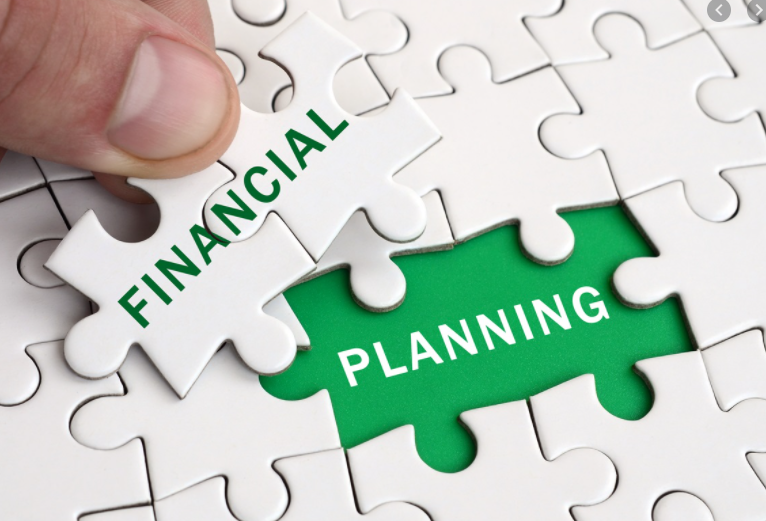I have a commercial that has run on the radio that asks the questions: What is your favorite thing to do? Do you have a favorite hobby? Or a favorite vacation spot? Then it goes on to ask: Years from now, when you are at the retirement age, will you still be dreaming those dreams or will you be living them? Anywhere we desire to go in life takes planning or at least some sort of path to get there. Most people plan their vacation better than their financial lives.
This is the first in a series of articles that will systematically go through the procedures of establishing your own financial plan.
FINANCIAL PLAN
A financial plan is a detail accounting of all of your financial assets and liabilities; your budget; your financial goals and the method to attain them. If you are truly concerned about your finances, your goals, and your plan to achieve them, then you need to make the time to sit down and lay these out with a qualified financial planner.
A note about “Financial Planners” In the early 1980’s it became popular for life insurance agents to gain rudimentary investment qualifications to sell Mutual Funds and Variable Annuities. They then called themselves “financial planners.” My clients benefit from the comprehensive service and products that only a fully licensed securities broker, investment advisor, and life insurance agent can provide. As a result, I have chosen not to call myself a “financial planner,” although I can provide comprehensive financial planning. Make sure that when you decide to lay these items out with a financial planner that you don’t just meet with a wolf in sheep’s clothing.
STEP ONE
The first step is a balance sheet, the listing of all of your financial assets and liabilities. This step lets you know your net worth, the starting point on your path.
BALANCE SHEET
Assets
Assets fall into 3 main categories: cash assets, investments, and personal assets. We will begin with your cash assets. These will include:
- Savings
- Money market accounts
- Checking accounts
- The wad of hundred dollar bills you under your mattress!
Next are investments at gross face value (do not subtract debt). These include:
- Savings bonds
- Corporate or municipal bonds
- Mutual funds
- Stocks
- Stock options from work
- Annuities
- All IRAs
- Employer retirement plans, yes even the ones you left behind at the last employer and have not yet moved
- Personal businesses
- Real Estate
- Other investments
Remember: There are a number of ways to value a business, assets minus liabilities or a multiple of 2 to 4 times gross receipts, etc.
When listing your real estate, put down all of it. Examples would be: lake lots, rental properties, second houses, your office building, all at appraised value and even partial interests in the property.
Other investments would be like art, collectible coins or bullion, or crystal figurines. But do not include beanie babies, by now the boll weevils’ have eaten most of them and they were just a fad anyhow. Lastly, we need to include personal assets. These include:
- The contents of your household (garage sale prices)
- Home at appraised value
- Automobile(s)
- Personal Equipment
The personal equipment would contain items such as a wood shop, lawn equipment, power tools, sewing equipment, a boat or jet skis. Whatever your hobby is you probably have some equipment associated to it. KEY: Put a value on it and write it down.
Liabilities
We then get to the gut wrenching part, liabilities, which is the proper term for debt. Let us start with your home mortgage, what do you have left on the total debt on your house? If you rent, you do not have a mortgage, just hang in there. List any personal or business loans even loans which you cosigned with a partner. The amount you owe on your automobile(s). Again if you lease, you do not enter any information, we will get to that in couple of weeks. Credit cards, no fudging here; what is the total real debt that you owe? Grit your teeth and enter all of them. If you pay off your credit cards at the end of the month, you probably carry a certain amount of debt from one month to the next, include the average amount of monthly carried debt. List any other liabilities like student loans or furniture, electronics, etc that was financed at the store.
FINAL THOUGHTS
Once you have written down or entered all of this data, you have created a balance sheet and now know what your net worth is. This is important; you have to know where you are to find the path to where you want to be. Also, you will need this information if you ever want to borrow money for the purchase of a home, rental property, vacation property, or a business. Bankers and lenders alike always need the net worth in its entirety to judge whether or not you are a good credit risk. From here we can proceed to the next step, the income statement and budget.
You can sign up to receive a Balance Sheet calculator and the additional items to help create your complete financial plan. After you have completed the forms, you are welcome to send them to me and I will provide you with a free financial plan. All information received to our office will be kept in strict confidence, and would not be disseminated to anyone.
Corey N. Callaway
Investment Advisor Representative
